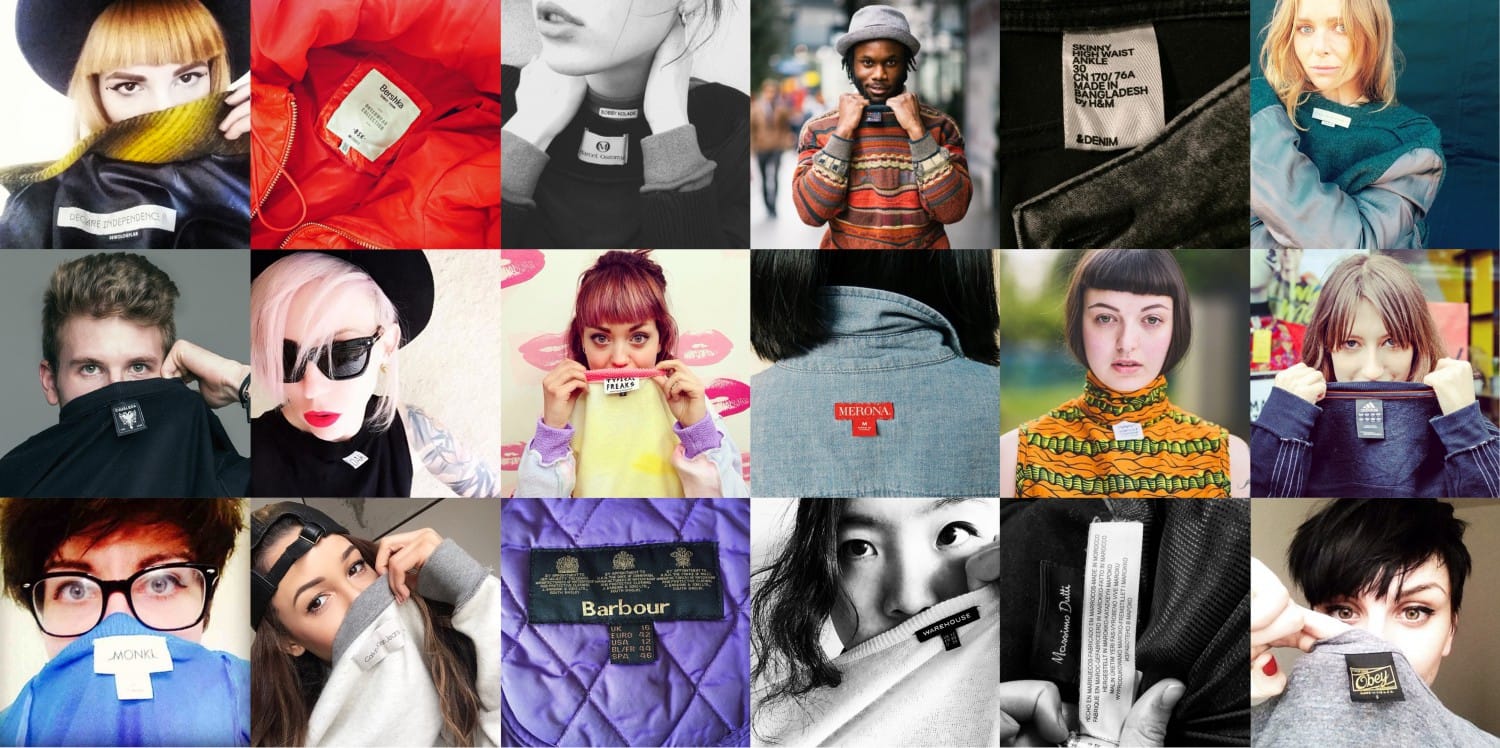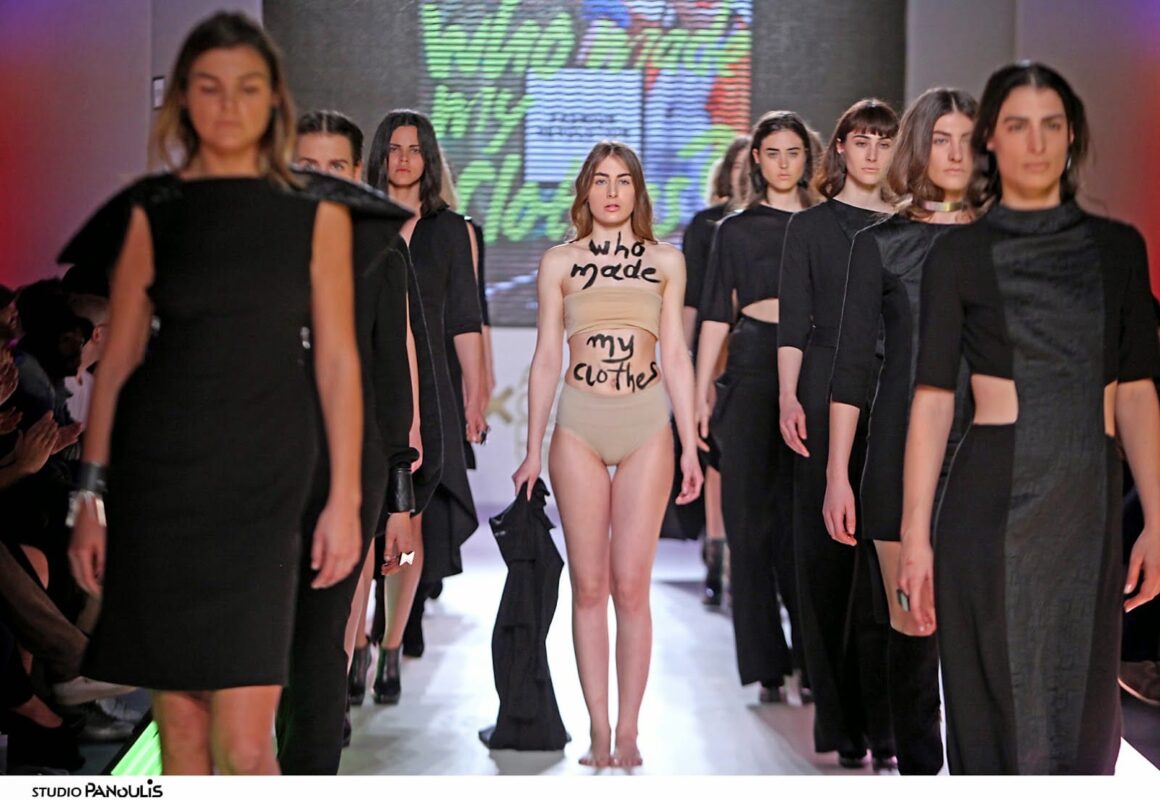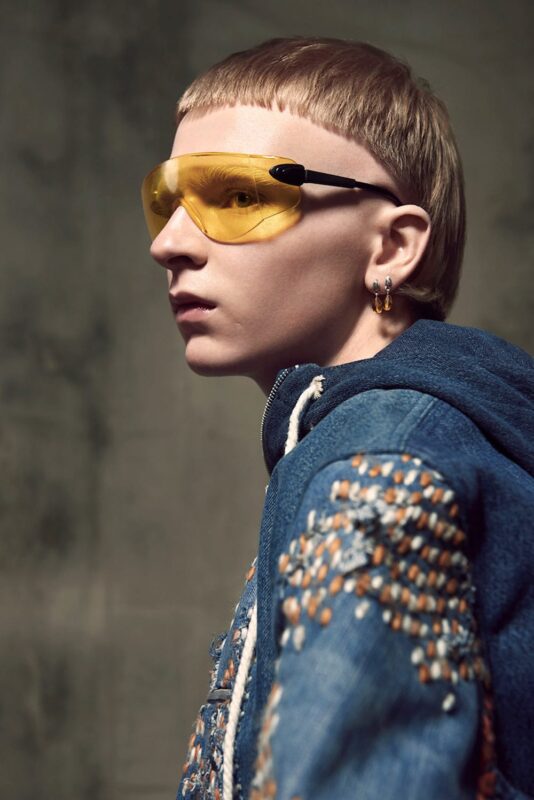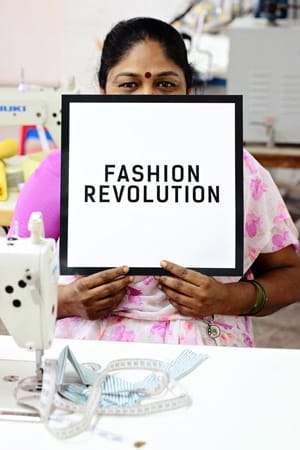During the Latin America Fashion Summit, there was a panel sponsored by C&A Foundation about transparency; the next trend in fashion.
The panel was moderated by Jill Tucker, C&A Foundation, Head of supply chain innovation and transformation.
The panelists were:
Andre Campos, journalist and member of the Reporter Brazil.
Carry Somers, Founder of Fashion Revolution.
Miguel Brito, Director of Textiles Brito.
Miguel Angel Alvarez, Director of CEREAL.
During the transparency panel, they said that transparency goes two ways; that when employees know the process well, they get more involved, and when they know their rights, then the companies become more productive. The panelists also mentioned that a brand without prestige is nothing, that the fashion industry needs to have intersectional dialogue, etc. To go deeper into the subject, Welum editor, Lizet Esquivel, interviewed Carry Somers, who is the founder of Fashion Revolution, the world’s largest fashion advocacy movement.
What are the business challenges of raising awareness throughout the production chain, in order to become transparent?
The global fashion industry is opaque, exploitative, and environmentally damaging and desperately needs revolutionary change. After the Rana Plaza disaster, it took many brands several weeks to work out what their relationship was with that factory complex. Campaigners had to search through the rubble for clothing labels to prove which brands were actually being produced there. The third edition of Fashion Revolution’s Fashion Transparency Index, launched in April, ranks 150 of the world’s largest fashion brands and retailers according to their level of transparency. It shows that we still do not know enough about the impact our clothing has on people and the planet. No brand scored over 60%, and a third of the brands scored 10% or less.
While we are seeing brands begin to publish more about their social and environmental efforts, which is welcome and necessary, there is still much crucial information about the practices of the fashion industry that remains concealed, particularly when it comes to brands’ tangible impact on the lives of workers in the supply chain and on the environment. Brands score relatively well for disclosing their policies and commitments but score fewer points when you drive into detail about how their policies are put into practice.
What are the solutions to these challenges?
Fashion Revolution believes that the whole fashion industry needs a radical paradigm shift and that the way that we produce and consume clothes needs to be transformed. We believe change needs to happen at three levels: government, industry and culture. In a Ipsos Mori survey of 5,000 people across the five largest EU markets published by Fashion Revolution last month 85% of people surveyed said it is important for fashion brands to address climate change and 75% of people surveyed said brands should protect the environment at every stage of making their products.
Transparent disclosure makes it easier for all the relevant parties to understand what has gone wrong, who is responsible and how to fix it. We believe that transparency leads to greater accountability, which eventually will lead to a change in the way business is done. When companies publish information about their supply chains and business practices, issues along the supply chain can be identified, addressed and remedied much faster. Greater transparency also means best practice examples, positive stories and effective innovations can be more easily highlighted, shared and potentially scaled or replicated elsewhere. Brands are becoming more transparent in certain areas, such as publishing their first tier factories, but it is a slow process and progress is patchy. We need to speed up the pace of change and we need brands to use the Fashion Transparency Index as a tool to publish credible, comprehensive, comparable information about their policies, practices and impact.
Most brands still have very marginal positive impact, particularly on the lowest levels of their supply chain where the raw materials are grown and processed. Only 18% of brands are publishing their processing facilities and just one brand publishes raw material suppliers. Last year I visited the tanneries in Bangladesh who tan the leather for many premium brands as well as fast fashion. I saw tannery effluent flowing into the drainage ditches and into the river and solid waste like animal tails being dumped in the streets. I was told that brands never visit the tanneries. I was told that only 5-10% of tanneries and footwear factories have adequate working conditions and that brands never visit the tanneries.
Workers beyond the first tier factories have little bargaining power since they have indirect relationships with the brands. According to IndustriALL Global Union, over 90% of workers in the global garment industry have no possibility to negotiate their wages and conditions. We need to see brands do more to positively affect working conditions at the lowest levels of the supply chain.
What can we do to get fashion consumers involved in this process of transparency?
Fashion Revolution Week takes place in April each year on the week of the anniversary of the Rana Plaza collapse, but the revolution continues all year round. Around 2.5 million people engaged with Fashion Revolution over the course of last year. We encourage you to show your label and ask the brands you love #whomademyclothes. We have just relaunched our How to be a Fashion Revolutionary booklet, which is packed with great ideas about how people can get involved. You can find it at: https://www.fashionrevolution.org/wp-content/uploads/2015/11/Website_HTBAFR_Booklet_BCxFR_Print.pdf
I was told by one industry insider that for every one person asking #whomademyclothes, they were taking it as representing 10,000 people who felt the same but couldn’t be bothered to do anything about it. This shows the real power we all have as individual consumers. We believe the growing number of citizens around the world asking #whomademyclothes will encourage greater transparency and help improve the lives of workers in the fashion supply chain.
When citizens and consumers are equipped with more — and better quality, credible, comparable —information about the human and environmental impacts of the clothes they buy, they are able to make more informed choices when they are shopping.
What are the most representative achievements of the fashion revolution movement?
In terms of traceability, in our Fashion Transparency Index, 37% of brands and retailers are now publishing a list of where their clothes are cut, sewn, and completed, up from 12.5% two years ago. This is something we at Fashion Revolution, along with other organizations, have been pushing for, and it represents the most significant and positive increase in transparency. Brands are starting to tell stories about their makers and materials and showing us where our clothes are made and who made them using the hashtag #Imadeyourclothes. Gildan, Zara, G Star Raw, Fat Face, and Monsoon are amongst over 4,000 fashion brands and retailers that responded with photographs and information about their workers in April.
What is your perception of the fashion industry in Latin America in terms of transparency?
We are seeing a growing appreciation of traditional skills which are undervalued and underutilized in mass manufacturing. Millennials, in particular, are looking for authenticity and connections; for participation rather than purchasing. They want to know who made their clothes and accessories. Latin America has a rich, diverse textile heritage and can contribute to a more sustainable design aesthetic by showcasing its skills and the beauty of slow fashion.
Latin America benefits from short supply chains. A lot of clothing is made from raw materials which are farmed there such as pima cotton, wool, and alpaca; and spinning, weaving, and dyeing are still widely practiced as cottage industries, a well as on a larger scale. As such, it can be much easier for brands to trace their supply chain and consumers to find out #whomademyclothes in Latin America than in many other parts of the world, where raw materials are generally shipped across several continents to be woven, dyed and sewn. Our next fanzine, due to be published in early 2019, will focus on artisanal production and will showcase some of the traditional textile skills of the region, from indigo dyeing in El Salvador to panama hats in Ecuador to the Mexican rebozo.
You were a panelist and also gave a workshop at LAFS, how did you feel sharing your knowledge to Latin American designers? Tell us more about your experience in the event in general.
As a designer who has worked in Latin America since 1992, I feel I have so much knowledge and experience to share from over two decades working with artisan communities at Pachacuti, as well as from several visits to the region over the past five years for Fashion Revolution. I am passionate about encouraging designers from the region, showing them how they can better monitor and assess their supply chains through innovative tools, and helping them to develop their products in a responsible, sustainable way.
Nowadays there are new terms like: slow fashion, ethical fashion, and sustainable fashion, could you help us clarifying the difference between each one?
Not really! Each one will mean something different depending on who you ask. You will sometimes find people talking about sustainability only in terms of the environment, whereas we believe in a fashion industry that values people, planet, creativity and profit in equal measure. The social and environmental aspects are inextricably linked, such as where people’s livelihoods and wellbeing depend on healthy ecosystems. For fashion to become more sustainable, brands and retailers must ensure shareholder profit is not prioritized above the protection of our ecosystems and the health and wellbeing of our communities.
Is there anything else you would like to add?
Fashion Revolution is a global movement comprising of people from all around the world who make the fashion industry work. We are the people who wear clothes, the brands and retailers who sell them, and we are the people who make them. Please get involved in Fashion Revolution by contacting your local country coordinator at: https://www.fashionrevolution.org/about/find-your-country/. Ask brands and retailers #whomademyclothes. If you are brand, retailer, or producer, please show us photographs of the people who work in your supply chain, using the hashtag #imadeyourclothes. Together we can change fashion.







